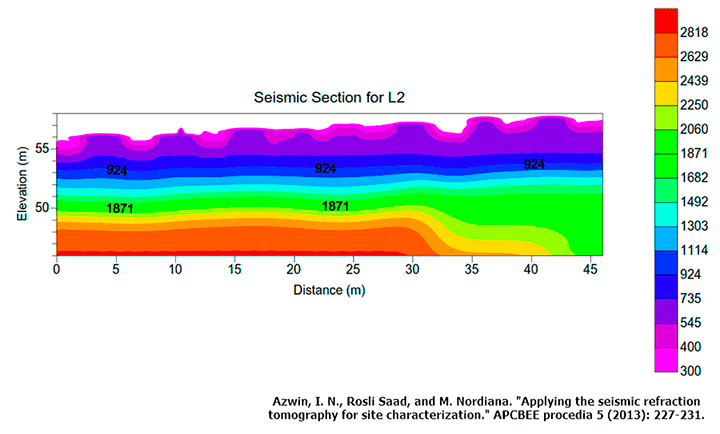SEISMIC REFRACTION
The seismic refraction method measures the propagation velocity of seismic waves returning to the surface after traveling through the subsurface along refracted ray paths in a stratified media.
The acquisition method consists of nailing equidistant seismic sensors (geophones) through a survey line which will measure the seismic response of refracted waves in different layers of the subsoil due to a seismic source (hammer).

Refraction will occur in structural systems where the propagation velocity increases with depth, obtaining better results in structures with high velocity contrast between layers.
By means of analysis, 2D modeling and interpretation, the refraction method allows the classification of terrains and soils along linear works (tunnels and roads), geological formations distribution, terrain characterization (hardness, fracturing and alteration degrees). The method also can be applied in the evaluation of tunnel entrances and dam foundations. Also, the method is very useful to identify altered levels on compacted rock.
